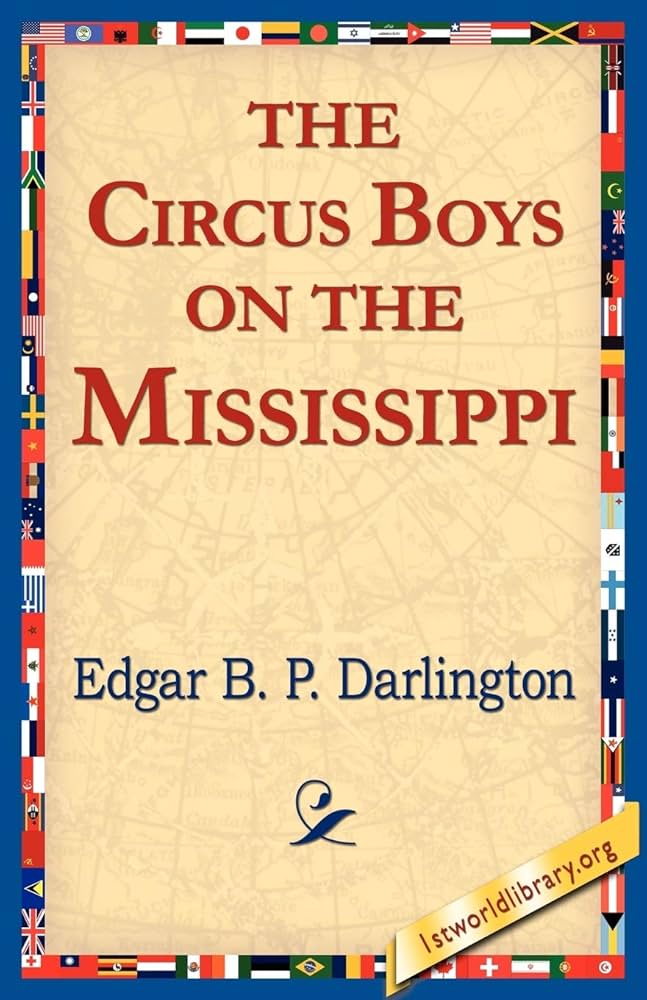Chapter III — The Circus Boys on the Mississippi
byChapter III begins with a burst of laughter that feels rare yet welcome within the routines of circus life. Mr. Sparling, typically composed and professional, can’t suppress his amusement as Teddy manages to turn a moment of disobedience into an improvised performance. Despite his tendency to stir trouble, Teddy’s charm often wins the crowd—and even his boss—over. He takes pride in wrangling January, the temperamental donkey, boasting as if it were a high-wire act. His antics bring levity, but also serve as a reminder of the unpredictability embedded in circus life. Mr. Sparling’s reaction reflects not just tolerance, but an appreciation for the spontaneous spirit that often defines success in the ring. Laughter becomes a release, a bridge between the performer’s rebellion and the manager’s expectations.
As the chapter unfolds, Phil and Teddy walk and talk, observing how their journey across Illinois has taken unexpected turns. They exchange theories about the route, clearly puzzled by Mr. Sparling’s evasiveness regarding upcoming shows. It’s more than curiosity—it’s a genuine concern about what the circus is doing and why. For Phil, who takes the circus very seriously, the lack of transparency creates quiet tension. Teddy, while still jovial, can’t help but mirror Phil’s questions in his own, more sarcastic tone. This ambiguity in their travels adds depth to the story, emphasizing how performers, despite being stars in the ring, are sometimes kept in the dark. Their loyalty is unwavering, but the mystery ignites a need to understand more about the journey they’re part of.
The narrative makes a graceful pivot from speculation to sentiment as Decoration Day approaches. This moment of remembrance introduces a solemn break from the usual excitement, showing another dimension of circus life—its deep emotional roots. Mrs. Waite’s modest tribute to her late husband, a soldier lost at Gettysburg, is not just a personal act of mourning. It becomes a communal one, resonating with those who understand the pain of loss even while wrapped in the illusion of joy and entertainment. Phil’s silent observation of the makeshift grave is powerful. It reveals that even amid flashing lights and applause, circus folks carry with them the same grief and love as anyone else. The mobile nature of their world doesn’t diminish their respect for tradition—it deepens it.
This observance also brings the performers closer, bridging the gap between spectacle and humanity. Phil and Teddy, often light-hearted in their interactions, respond with quiet reverence, recognizing how moments like these anchor them to something larger. The chapter shows how the circus, though always moving, pauses when it matters. It’s a community not just of performers, but of people who still grieve, honor, and remember. That balance—between transient joy and enduring connection—makes their life both harder and richer. The decision to include such a commemorative event underscores how the past remains present, even among those who live from town to town.
Against this emotional backdrop, the tension between Phil and Diaz, a mysterious clown, adds subtle layers to the evolving narrative. While no direct confrontation erupts, the underlying unease suggests future conflict. Phil’s instincts, usually on point, detect something troubling, yet he holds back. It shows maturity but also foreshadows that unresolved feelings may surface later. Circus life, it seems, is not only about managing animals and routines—it also requires reading people and staying alert. Trust is earned not just through performance but through daily interactions, and Phil is learning who deserves it. That growing sense of caution signals a coming shift in tone.
What the chapter does remarkably well is remind readers that the circus is a microcosm of life. Within its colorful chaos are real friendships, hidden worries, and moments of pure, unfiltered emotion. From Teddy’s clowning to Mrs. Waite’s solemn ritual, every act and every word contributes to a layered experience. The performers are not just characters in a spectacle—they are witnesses to each other’s histories, secrets, and grief. This blend of humor, mystery, and heartfelt reflection makes the chapter not just a transition in plot but a deepening of what it means to belong. In a world that never stays still, memory and community hold everything together.

